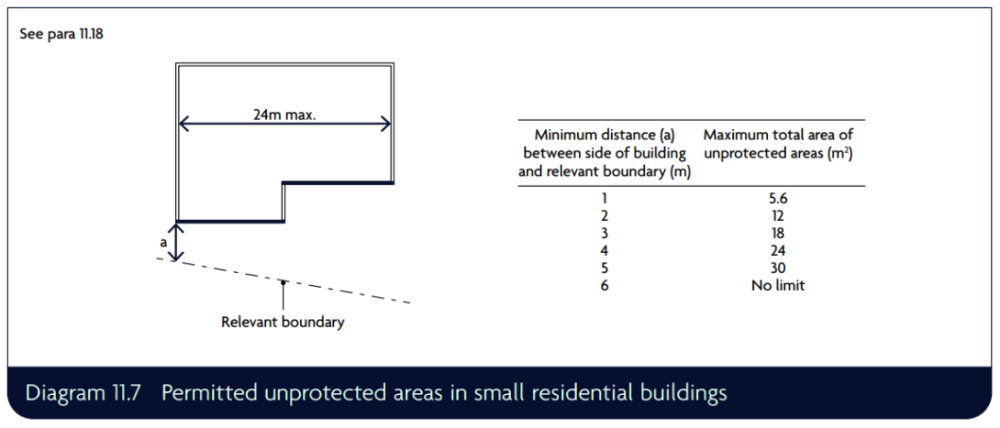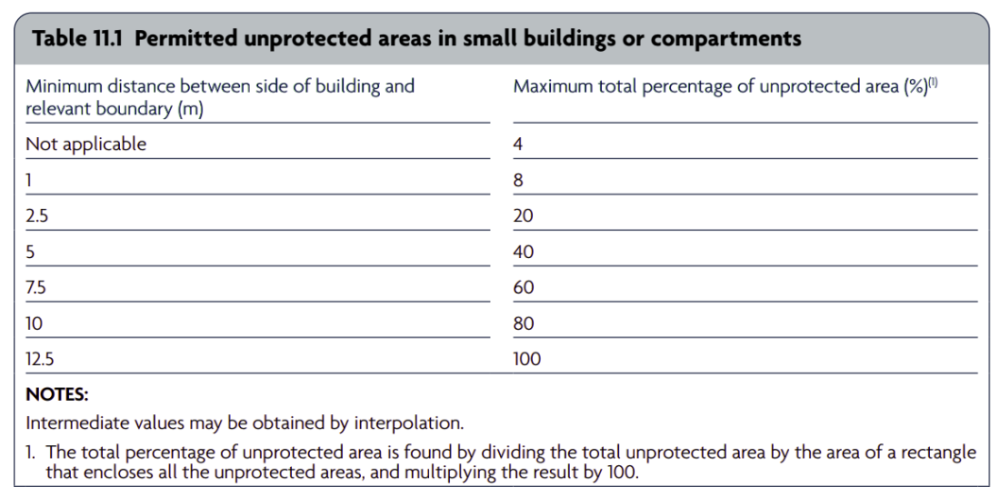Over the past few years, rules on fire classifications have changed to improve the safety and structural integrity of residential buildings. For exterior wall cladding materials, fire performance testing is a requirement under the latest Euroclass Standards.
Different types of exterior cladding have different fire rating classifications for combustibility. Some building materials are more combustible than other types, such as wood or composite. Knowing this will help you to decide which products to choose from.
If you need to meet certain building regulations, for example your building is over 18 metres high and is residential, research into exterior cladding will be essential.
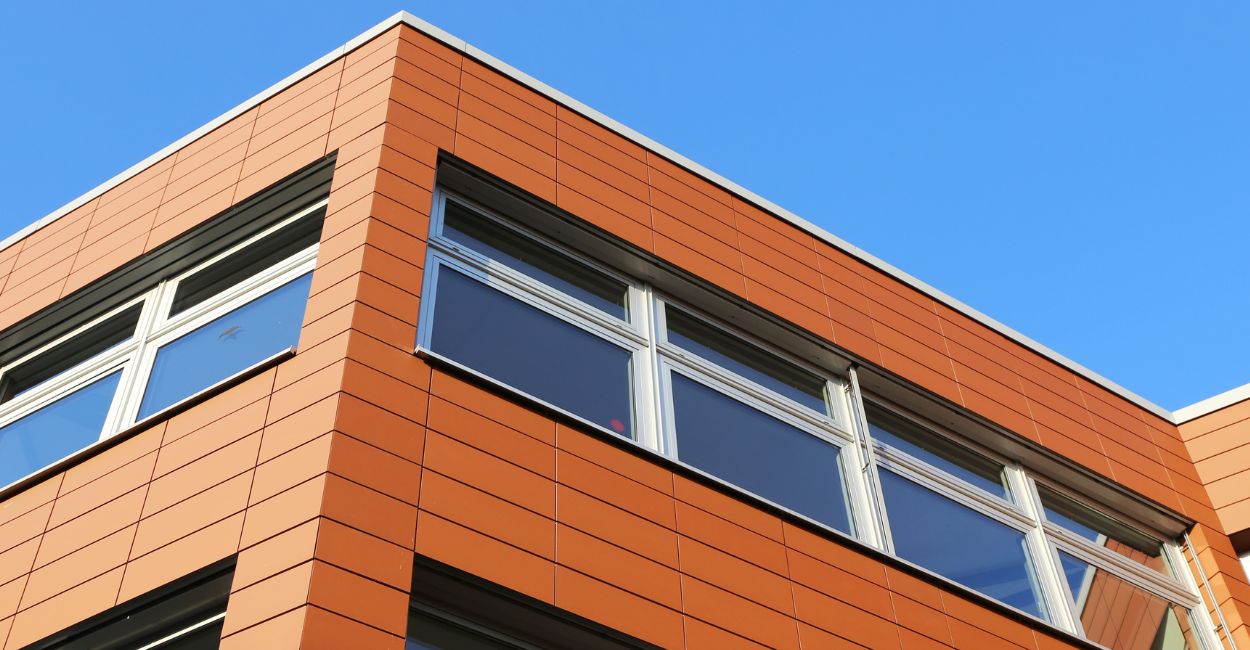
It's also good to know the difference between 'resistant' and 'proof'. The latter means that the product is unaffected by fire and that it doesn't burn with great heat and can't be destroyed by fire.
Fire resistance is a term used to describe the resilience of a product against fire. This is based on a number of requirements and measured over a specific time frame, which include:
-
Resistance to collapse
-
Resistance to fire penetration
-
Resistant to transfer of excessive heat
Cladco Fibre Cement Wall Cladding Boards are fire rated to Class B (s1-d0) under the European Standards system. As a material that consists of cellulose fibres and cement, this type of cladding provides resistance to smoke and flaming droplets. These are tested as part of the fire rating system and are described as 's' and 'd' values, which we look at in the below tables.
Article Contents
Quick Summary of Materials
| Material | Typical Fire Rating |
|---|---|
| Aluminium, Steel, Brick | Class A - Non-combustible |
| Fibre Cement, Enhanced Timber | Class B |
| uPVC and PVC | Class C (in some cases Class B) |
| Untreated Timber, Composite Cladding | Class D (in some cases Class E) |
-
Aluminium, steel, and brick are combustible-free materials, and come under Class A rating.
-
Fibre Cement Cladding and enhanced wood cladding are Class B fire rated cladding for external walls. They provide flame resistance and limited combustibility.
-
uPVC cladding material ranges can be Class C or in some cases, Class B, and have limited contribution to fire.
-
Untreated timber can be Class D or Class E, with composite materials generally falling into this category.
Please note: The above table is a guideline only. Actual ratings will vary. Please consult the supplier of the material for a fire test certification.
Does Cladding Need To Be Fire Rated?
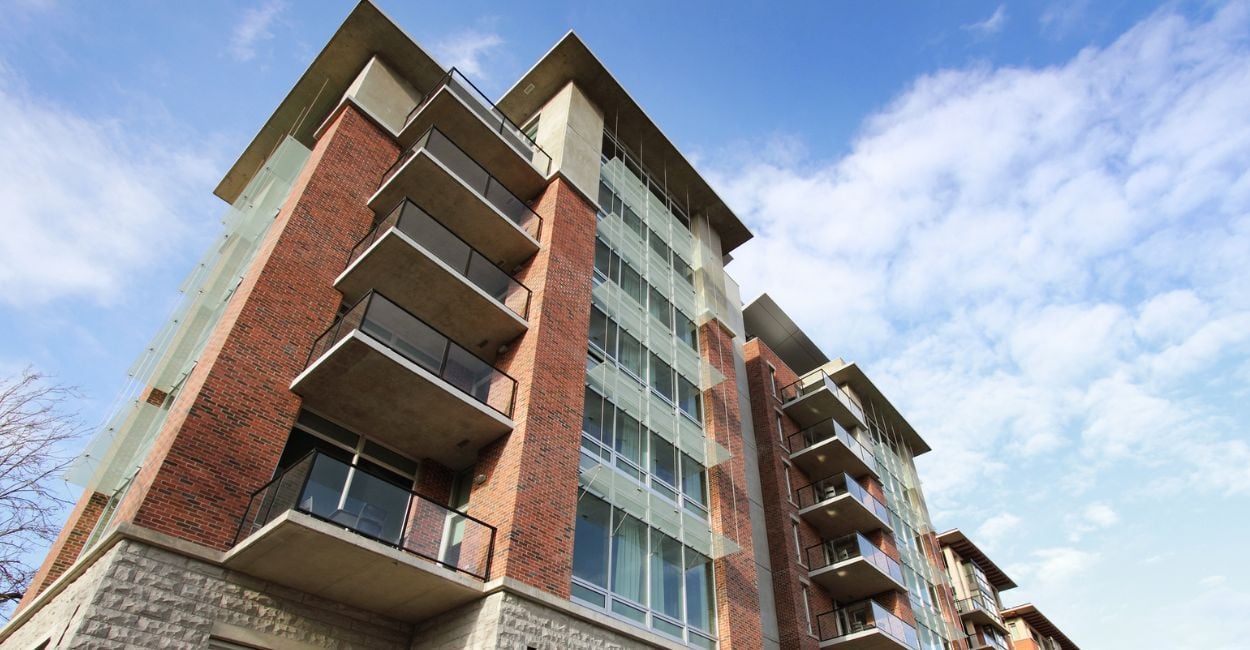
Building regulations were revised to state that for residential properties, non-combustible cladding needs to be installed which are fire rated to A1 or A2-s1-d0 classifications for all heights.
The Euroclass rating system has now replaced the British Standards. The changes state if you are installing cladding onto non-dwelling constructions, Class B (or better) rated cladding can be used on buildings up to 18 metres in height and which are located up to 1m or closer to other buildings.
This is different for structures under 18m and more than 1 metre away from boundaries or other buildings. In this case, no rating is required for exterior cladding.
Class B-rated cladding products can be installed onto certain building types, so long as the insulation being used is Class A2 rated or better. These structures for Class B cladding materials include:
-
Office buildings, or hotels, of any height
-
Residential buildings, or other buildings, which are under 18 metres
You should also check building requirements and local guidelines, which need to be researched before installing external wall cladding.
If you have any concerns about the safety aspect of your cladding refurbishment project or new build, we recommend contacting your local council for requirements and guidance.
Please refer to the official Government documentation (England) in 'Section 10: Resisting Fire Spread Over External Walls' here.
Fire Rating System
The below table shows the classifications of fire ratings according to Euroclass Standards.
This Standard provides a rating system to show combustibility, smoke propagation, and production of flaming droplets. If you are undergoing a new building project, and are planning to include cladding, we recommend familiarising yourself with local building requirements. Once you are familiar with those, it's time to choose the exterior cladding that's right for the job.
| Grade (European Class) | Definition | Smoke Propagation | Flaming Droplets |
|---|---|---|---|
| A1 | Non-Combustible | - | - |
| A2 | Non-Combustible (Limited) | s1-s3 | d0-d2 |
| B | Combustible – Very limited contribution to fire | s1-s3 | d0-d2 |
| C | Combustible – Limited contribution to fire | s1-s3 | d0-d2 |
| D | Combustible – Medium contribution to fire | s1-s3 | d0-d2 |
| E | Combustible – High contribution to fire | E-d2 | E-d2 |
| F | Combustible – Easily flammable | F | F |
Please note that higher classifications at any given level should satisfy the requirements of the classes below.
Products that have either limited combustibility, or do not combust at all, are A1 and A2 rated. In accordance with A2-rated products with limited combustibility, these also require further classifications under smoke emissions and flaming droplets during the combustion testing stage.
This table shows the fire testing classifications for smoke emission and flaming droplets, for example, 's1 d0'.
| Smoke emission during combustion | Definition (Emission Quantity /Speed) |
|---|---|
| s1 | Absent or Weak |
| s2 | Average Intensity |
| s3 | High Intensity |
| Flaming droplets/particles during combustion | Definition |
|---|---|
| d0 | No Dripping |
| d1 | Slow Dripping |
| d2 | High Dripping |
So what cladding is non-combustible?
External cladding with a rating of Class A, for example aluminium, is considered non-combustible. Products with an A1 rating do not have an additional 's' or 'd' rating. These include steel and brick cladding types.
This is different to A2-rated cladding products which can also display smoke emissions and flaming droplets, for example 'a2 s1-d0', but are classed as non-combustible.
You will come across terms such as 'non-combustible' and 'fire resistance', and it's good to know the difference. Non-combustibility describes a material that does not burn or ignite when coming into contact with fire.
So what cladding is 'fire resistant'?
Fire resistance varies depending on quite a lot of variables, which can determine how it reacts to fire. Depending on the raw materials used with the cladding, smoke production and flame spread may be higher.
The minimum classification for fire-rated exterior cladding according to recent regulations for your project needs to be considered before installation.
Typical Cladding Types and Their Fire Ratings
Timber Cladding
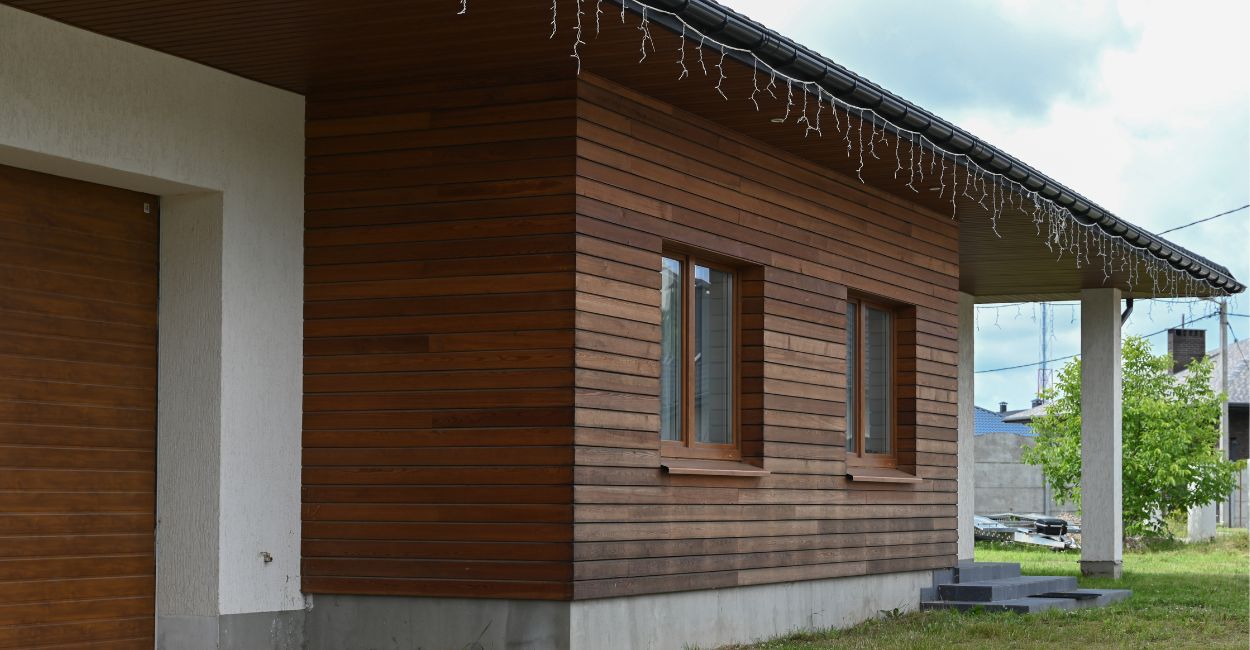
The typical fire rating of non-treated timber is Class D, which is defined as a combustible material with a medium contribution to fire. This type of board can be treated to improve its rating, and so many companies provide an alternative, reinforced material at a higher price. This can move Class D wooden boards into Class B or A2 fire classification.
Typically wood cladding is classed as combustible unless it has been treated to improve its fire rating. Fire resistance enhancements can be applied to wood to help it meet certain regulations for extra fire protection.
Fibre Cement Cladding
A Fibre Cement Wall Cladding Board is a fire rated cladding product with a Class B (s1-d0) certificate. This provides a very limited contribution to fire and makes Fibre Cement Cladding suitable for use on non-residential buildings under 18 metres in height and within 1 metre from the boundary.
Fibre Cement Cladding can be installed in line with UK Government regulations. Adequate support systems and insulation will need to be used with A2 fire ratings or above.
Composite Cladding
Composite cladding technology combines natural recycled wood fibres and recycled plastics for a low-maintenance product. Typically, composite cladding is combustible with a level of fire resistance to Class D.
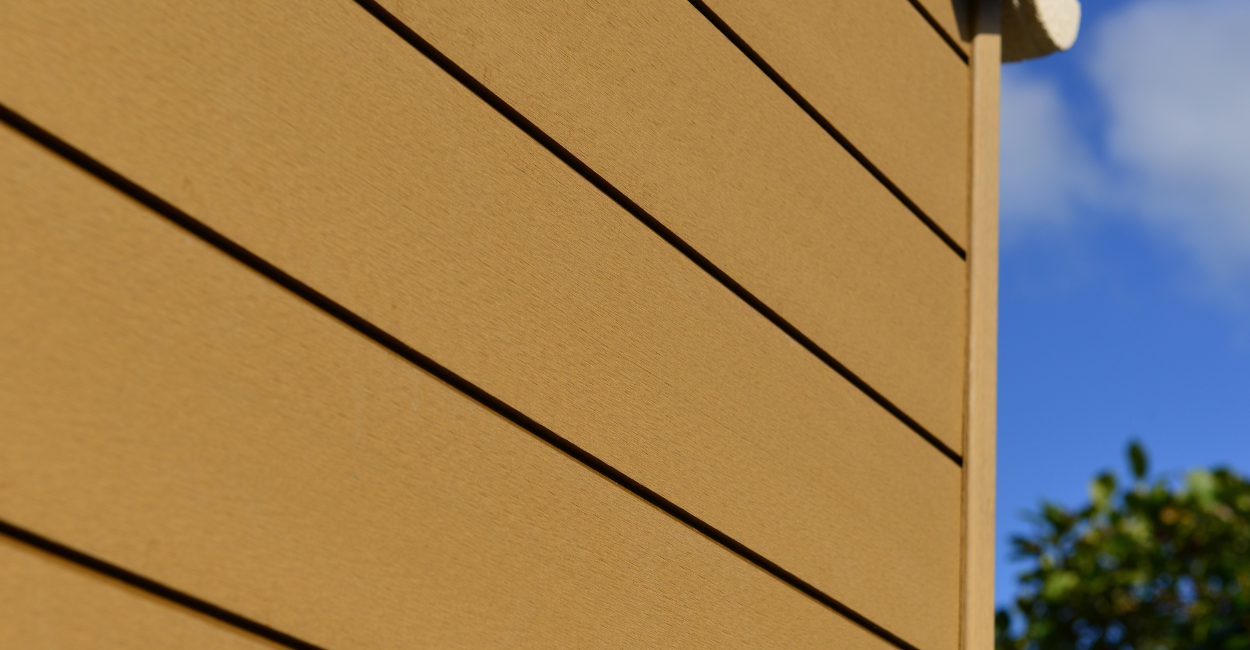
If you need to find out the fire rating classification and the reaction to fire and surface spread or flame of composite cladding, consult the supplier for an up-to-date certificate.
uPVC Cladding
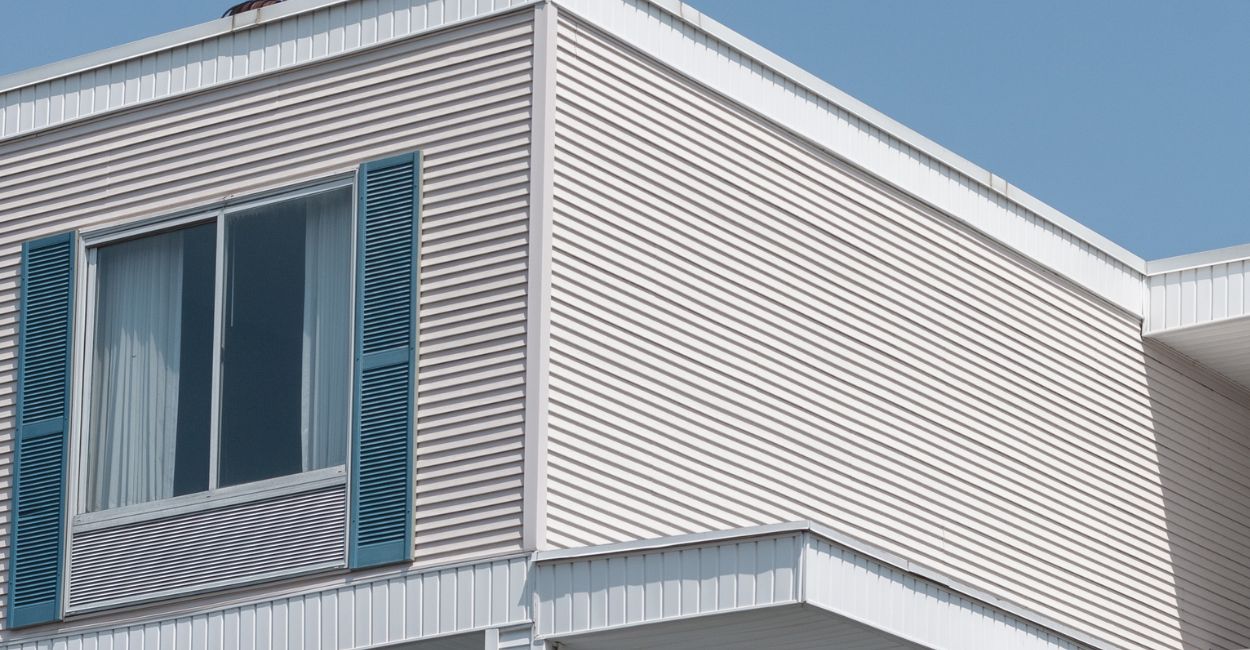
uPVC typically has a fire rating of Class C, making this a combustible product. This can vary quite a lot, with some u-PVC cladding reaching into the Class A category.
Typically uPVC cladding is combustible by comparison to other types. We always recommend consulting the supplier's specifications before purchasing.
Fire spread resistant from building to building
From the Approved Document B regarding fire ratings and building regulations in England when installing cladding, you, or the building contractor, will need to check that the regulations are met with the planning officer.
Here’s a summary of the requirements for dwelling boundaries. Please refer to the below diagrams for reference:
The fire resistance of a wall depends on its distance from the relevant boundary (see Diagram 11.1). Separation distances are measured to boundaries to ensure that the location and design of buildings on adjoining sites have no influence on the building under consideration.
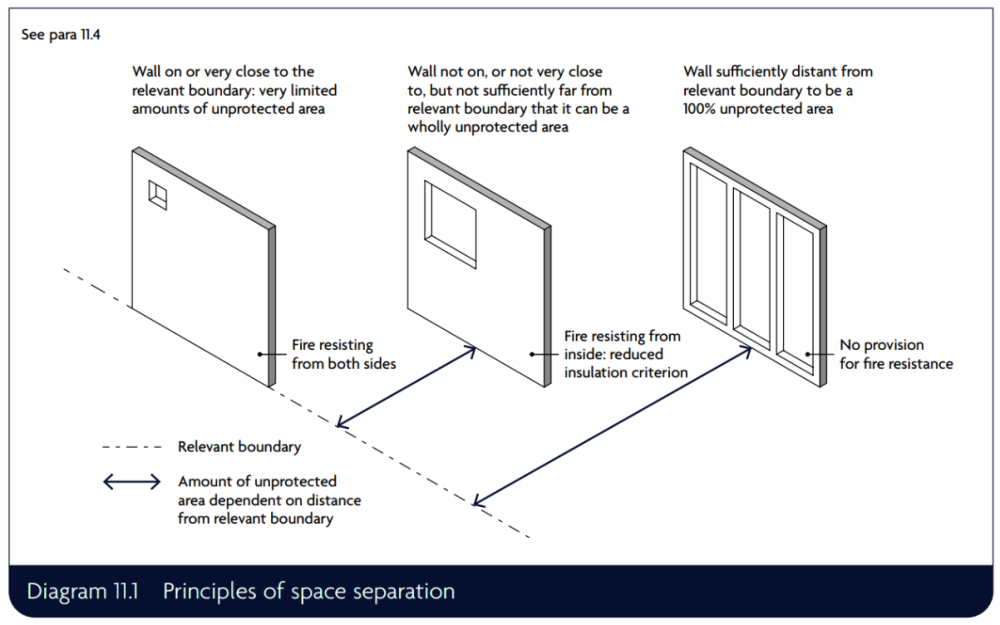
The boundary that a wall faces is the relevant boundary (Diagram 11.2).
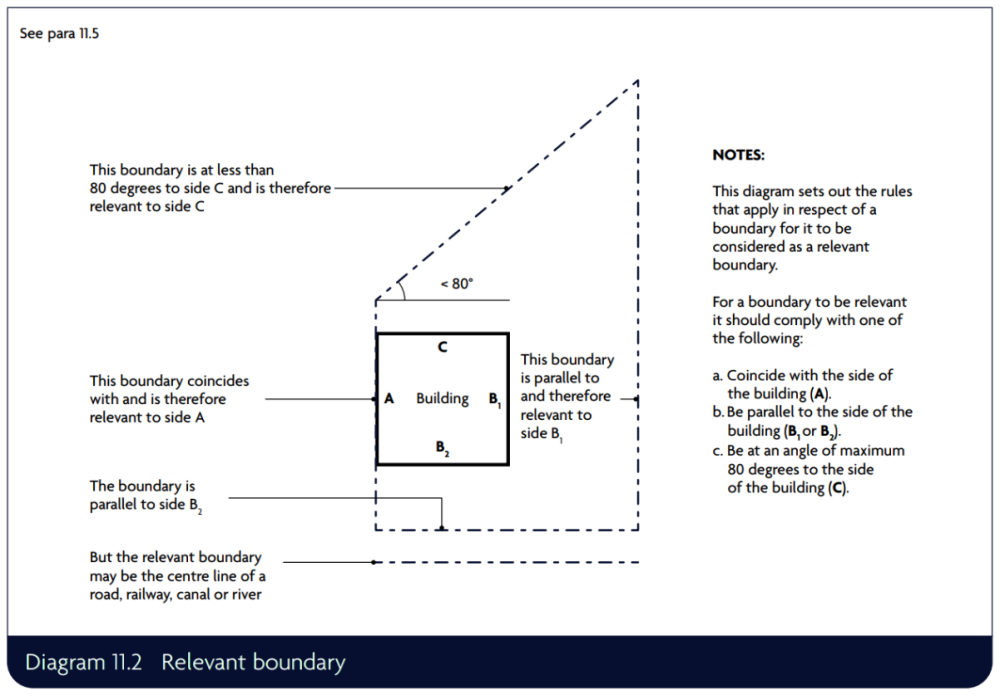
An assumed notional boundary between two buildings on the same site (Diagram 11.3) where either of the following conditions is met.
1. One or both of the buildings are in the ‘residential’ or ‘assembly and recreation’ purpose groups (purpose group 1, 2 or 5).
2. The buildings will be operated/managed by different organisations.
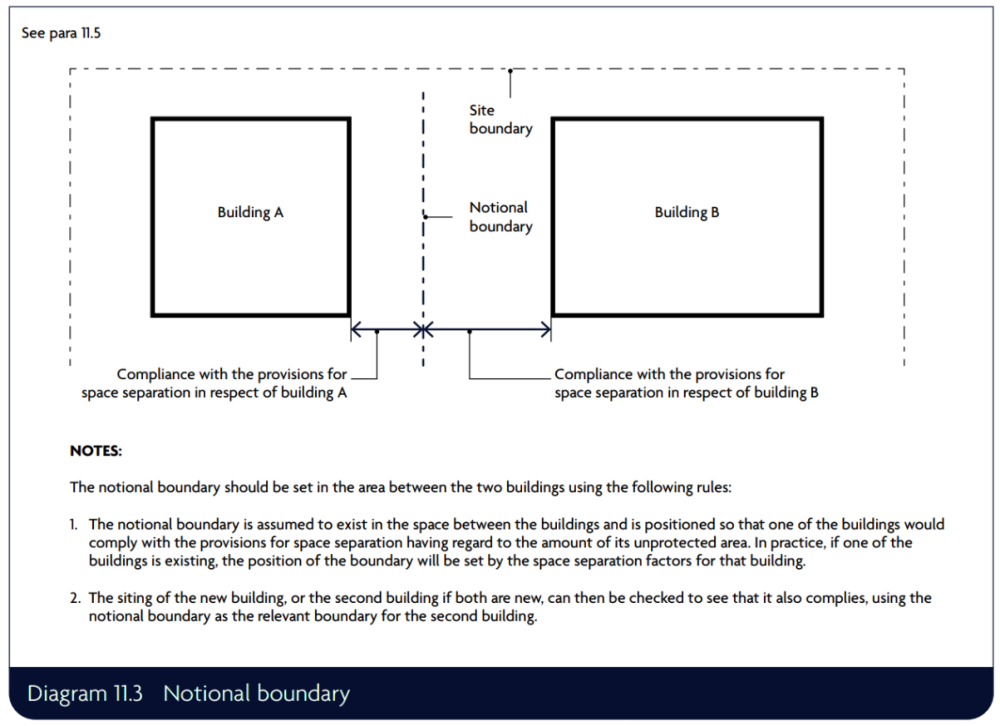
Fire resistance of unprotected areas
Where a fire resisting external wall has an external surface material that is worse than class B-s3, d2 and is more than 1mm thick, that part of the wall should be classified as an unprotected area equating to half its area (Diagram 11.4).
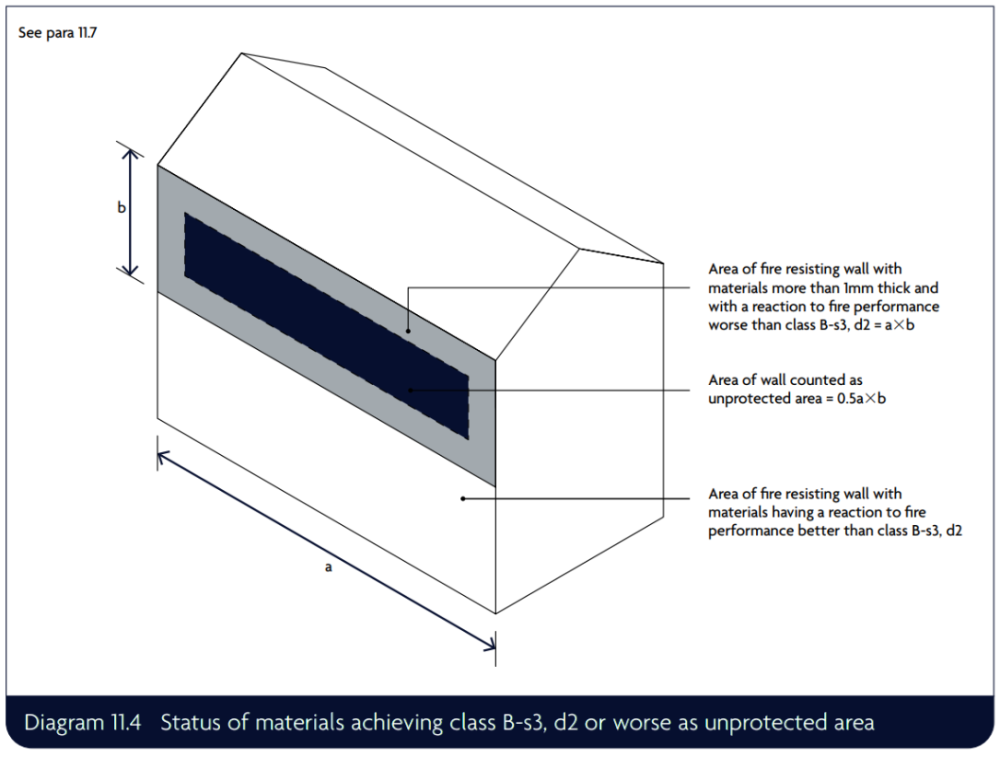
In an otherwise protected wall, small unprotected areas may be ignored where they meet the conditions in Diagram 11.5.
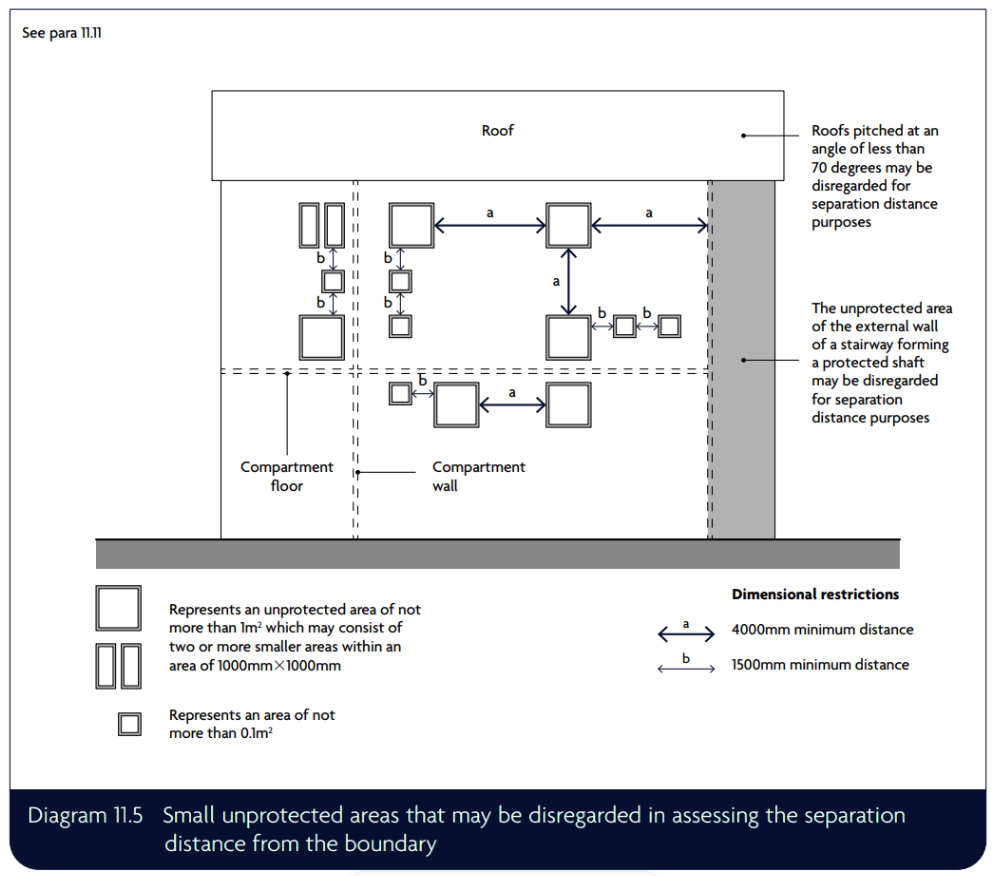
Canopies
Where both of the following apply, separation distances may be determined from the wall rather than from the edge of the canopy (Diagram 11.6).
1. The canopy is attached to the side of a building.
2. The edges of the canopy are a minimum of 2m from the relevant boundary.
Canopies that fall within class 6 or class 7 of Schedule 2 to the regulations (Exempt Buildings and Work) are exempt from the Building Regulations.
Space separation may be disregarded if a canopy is all of the following.
1. Free-standing.
2. Above a limited risk or controlled hazard.
3. A minimum of 1000mm from the relevant boundary.
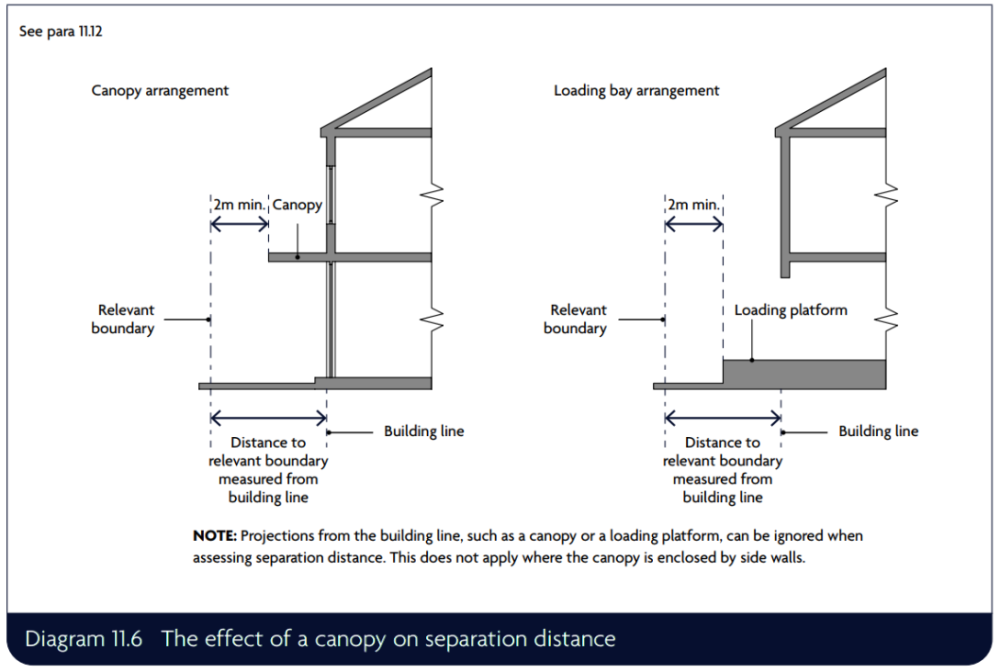
Methods for calculating acceptable unprotected areas
Two simple methods are given for calculating the acceptable amount of unprotected area in an external wall that is a minimum of 1000mm from any point on the relevant boundary.
Method 1
This method applies to small buildings intended to be used for blocks of flats or dwellinghouses.
The building should not exceed three storeys in height (excluding basements) or 24m in length. Each side of the building should meet the limits stated in Diagram 11.7. Any small unprotected areas falling within the limits shown in Diagram 11.5 can be ignored.
Method 2
This method may be used for buildings or compartments for which method 1 is not appropriate. The building should not exceed 10m in height. Each side of the building should meet the limits stated in Table 11.1. Any areas falling within the limits shown in Diagram 11.5 can be ignored.
Conclusion
If local regulations state that your cladding needs to be Class A rated for high-rise buildings of more than 18 metres, then it's important to shop around for only fire rated cladding.
If cladding doesn't need a Class A rating test certificate, then it's important to use this in a construction that doesn't require those regulations. For safety, this would be for a project of fewer than 18 metres and more than 1 metre away from a boundary and surrounding structures.
We always recommend consulting your local government for guidance on the latest rules and updates to standards and classifications.

